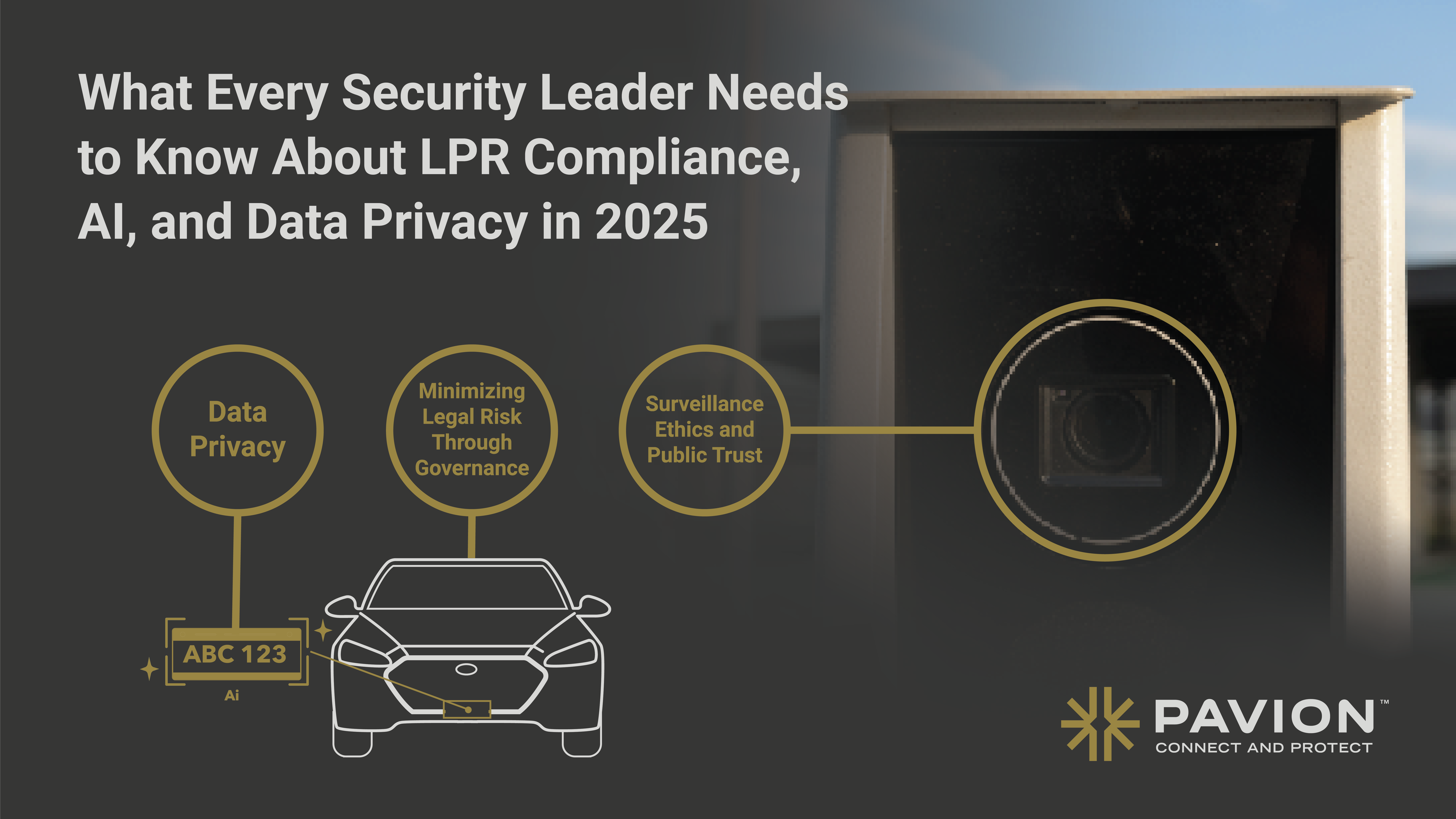
What Every Security Leader Needs to Know About LPR Compliance, AI, and Data Privacy in 2025
As License Plate Recognition (LPR) technology becomes more integrated into modern security ecosystems, security leaders are facing a new wave of questions—not about whether LPR works, but whether it’s being deployed ethically, responsibly, and compliantly.
With the rapid advancement of AI, increased scrutiny on surveillance practices, and tightening data privacy regulations, 2025 marks a turning point for how organizations deploy LPR. It’s no longer just about what LPR can do—it’s about how it’s done.
1. AI-Powered LPR: More Intelligent, More Regulated
Today’s LPR systems are driven by AI and machine learning, making them smarter and faster than ever. They can identify partial plates, decipher blurred images, and correlate data across camera feeds.
But with that intelligence comes new accountability.
Security leaders must now ensure:
- Algorithm transparency: Can your vendor explain how their AI identifies and matches plate data?
- Bias mitigation: Is your system regularly tested for geographic, demographic, or vehicle-type bias?
- Automated decision governance: If your LPR system triggers an action—like locking a gate or alerting authorities—can you audit and justify that action?
Pavion partners with technology providers that prioritize ethical AI development and offer explainable, auditable systems.
2. Data Privacy Is Now a Board-Level Issue
Under evolving regulations like the CCPA, GDPR, and a growing number of U.S. state laws (including in Washington, Virginia, and Colorado), license plate data may be considered personally identifiable information (PII). That means:
- You must have a clear policy for how data is collected, stored, used, and deleted.
- Data retention periods should be minimized and well-documented.
- Access logs should be reviewable and secure, with role-based permissions in place.
- End users and visitors may have a legal right to know how their vehicle data is used.
For sectors like healthcare, education, and critical infrastructure, these concerns are amplified by HIPAA, FERPA, and other compliance frameworks. Your LPR system must be part of your overall privacy governance strategy.
3. Surveillance Ethics and Public Trust
Just because you can track every vehicle on your property doesn’t mean you should—at least not without transparency. In 2025, stakeholders and the public expect organizations to:
- Disclose LPR usage through signage or public statements
- Explain the business case for LPR (e.g., safety, efficiency—not surveillance for its own sake)
- Safeguard data from misuse by internal or external actors
By treating surveillance ethics as part of your brand reputation—not just your legal obligation—you build trust with employees, customers, and communities.
4. Minimizing Legal Risk Through Governance
To reduce legal exposure, every security leader should ensure the organization has:
- A documented LPR policy aligned with company values and legal guidance
- A cross-functional compliance team (security, IT, legal, HR, and privacy officers)
- Regular vendor reviews to confirm compliance updates and certifications
- An incident response plan in case of unauthorized access or misuse of data
Pavion helps clients implement best practices for LPR governance—from system design to policy documentation—so you can stay ahead of regulatory and reputational risks.
Moving Forward: A Smarter, Safer, and More Responsible Future
LPR is a powerful technology—but in 2025, power alone isn’t enough. Security leaders must embrace responsible innovation, transparent AI, and compliant data practices to get the full value from their LPR investment—without compromising privacy or trust.
Let Pavion help you modernize your LPR strategy.
We’ll help you connect compliance, ethics, and operations—seamlessly.
Talk to our experts to learn more about responsible LPR deployment.


